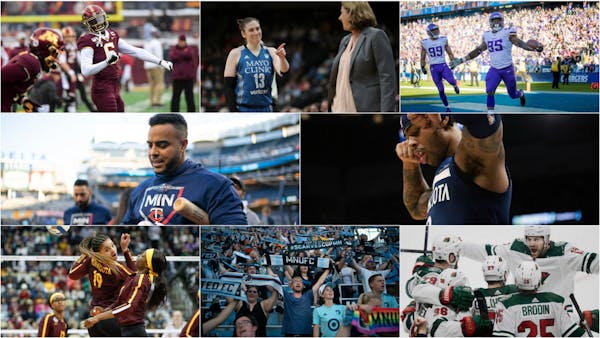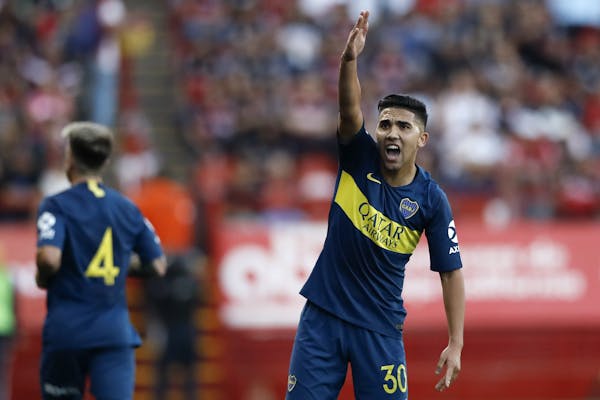Minnesota United on Wednesday announced a new approach to put young Minnesota soccer players on a pathway to reach the franchise's first team.
The team unveiled a "Youth Development Program' to train players as young as 8 years old and develop them through a pro U-23 reserve/second team that connect youth leagues and elite pro U-15 and U-17 teams to the club's first team.
Chief soccer officer Manny Lagos calls it a plan meant to "broaden the net" when identifying and grooming elite players.
It follows U.S. Soccer's abrupt April end to its 13-year-old development-academy system that included Minnesota United's youth teams. It's a bridge to Major League Soccer's new elite youth-development program intended to carry on where U.S. Soccer's elite-player governance left off.
The club's former development academy produced its first "homegrown" player in goalkeeper Fred Emmings, who was signed last January when he was 15.
The new MLS program — still in its planning stages — is expected to include at least 113 clubs and more than 11,000 players in six age groups. Lagos calls it "the highest-level elite league we've ever had" in a country that is producing talent good enough to play in Europe.
The Loons hired longtime Minnesota high school coach Noel Quinn as its director of youth development for a program that Lagos said will "cast a wider net" across the state. It will try to identify and nurture elite players from among the Minnesota Youth Soccer Association's 48,000 players, the Twin Cities Soccer Leagues' 20,000 players and another estimated 15,000 players of Hispanic, African and Asian or Hmong descent competing in ethnic leagues.
Quinn said the program intends to "embrace and believe" in the state's youth soccer from a "bottom-up rather than a top-down" approach.
"There's way more potential here than we realize," said Quinn, a former St. John's University assistant who was raised in Northern Ireland. He coached high school soccer at Columbia Heights, Simley and Eden Prairie before joining St. Thomas Academy, where he led it to a state title in 2016.
Lagos said the club in May "encouraged" its 80 academy players to "go find soccer" with their club teams where possible until the coronavirus situation became clearer and until MLS advanced in its planning. In June, the Loons laid off or furloughed its five-man coaching staff, including academy director Tim Carter, citing the pandemic's financial implications.
As many as 17 players opted to uproot themselves and in many cases their families to join MLS team academies in Portland, Kansas City, Cincinnati, Austin, Tex., or Shattuck-St. Mary's elite program rather than return to club or high-school teams.
Lagos said the franchise intends to double the number of players in each of its age groups, from 18 in its former academy to 35 or 40 players in the new program. Those players will be both allowed and encouraged to train with their club team and play in its state, regional and national competitions, unlike the previous development model.
Quinn believes players returning to their clubs will increase competition and motivate other players there by showing a way to MLS and the first team. The U-15 and U-17 teams in the MLS pro development league will play about 45 games a year, including league games, playoffs, Generation Adidas Cup and international competition.
"More soccer is good," Lagos said.
Lagos also said Minnesota United is committed to provide money and resources needed to tackle two factors unique to the club: its winter weather that keeps teams training indoors for half the year and its geographical isolation from other MLS franchises with their own programs and other elite development programs.
Minnesota United coach Adrian Heath, who has lived and coached in the U.S. since 2008, has seen how the country's size complicates elite player development.
"It's hard for me to get my head around how difficult it is for academies in this country with the travel and the cost of everything," Heath said in June. "They've tried an awful lot of things since I've been here."
Heath said he believes good coaching can develop players in market, without them needing to find better competition elsewhere until they're 15 or 16.
"My parents put about 180,000 miles on a Dodge Caravan in about five years," Loons veteran Ethan Finlay said in June about his youth-soccer years. "I can't sum it up any better than that."
Lagos said expensive domed-field time in winter and travel to find elite competition swallows 70% of elite training budget, which cuts into funding for better coaching as well as other investment in players.
"We have to improve the coaching in this country," Finlay said. "That's something that has been glaring for a very long time."
Lagos said the Minnesota United is committed to funding winter dome time, coaching, gear as well as more and better grass soccer fields throughout the state. A large dome will go up at its National Sports Center training facility in Blaine starting this winter.
John Hynes of Minnesota Wild to coach U.S. men's national team at world championships in Czechia
Sign of the times: NCAA approves coach-to-player helmet communication for 2024 football season


